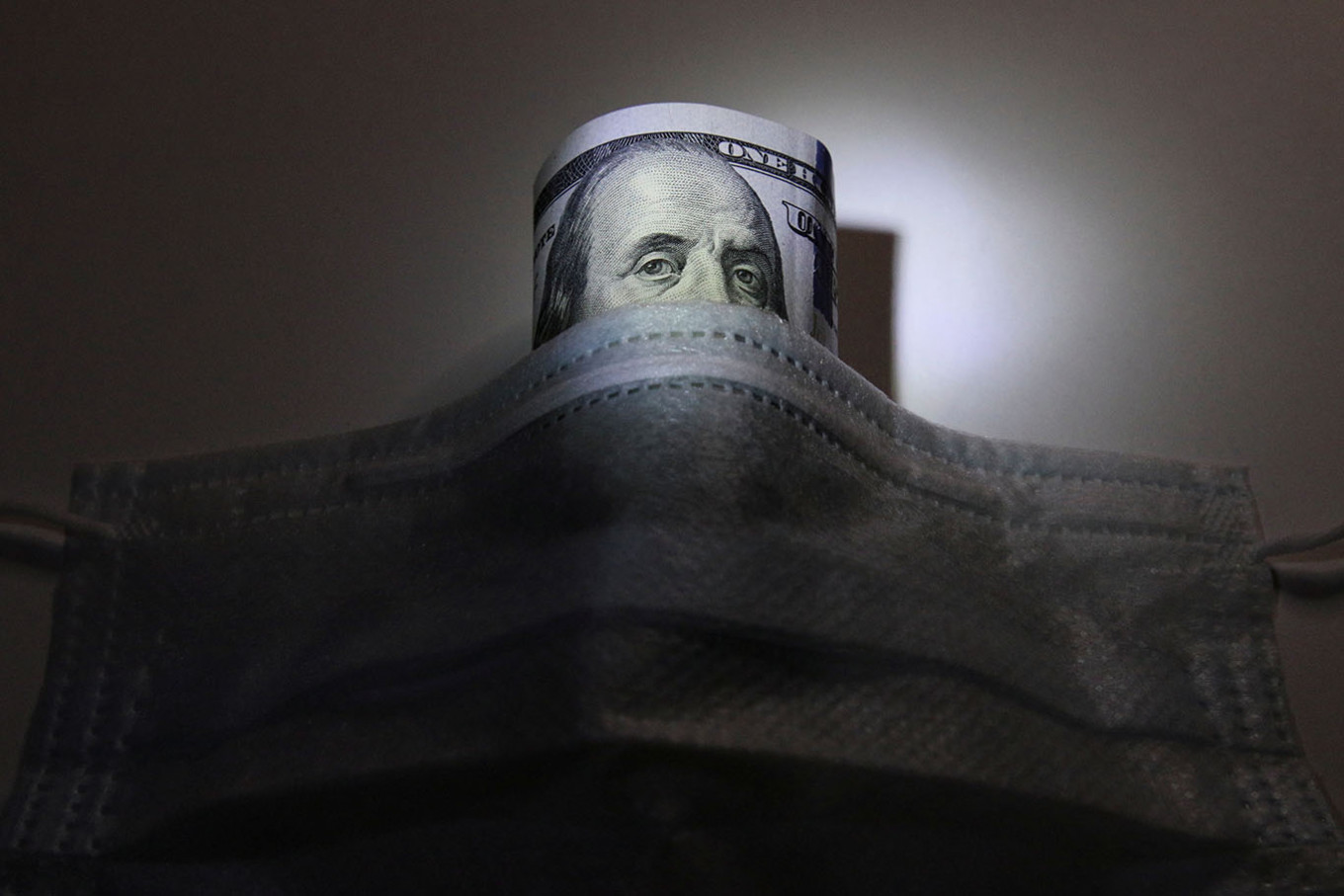Dollar and yen rise as tech selloff sends investors to safety
Change Size
 FILE PHOTO: A U.S. dollar banknote is pictured behind a protective mask, which is widely used as a preventive measure against the coronavirus (COVID-19), in this illustration taken March 17, 2020. (REUTERS/Alexey Pavlishak/File Photo)
FILE PHOTO: A U.S. dollar banknote is pictured behind a protective mask, which is widely used as a preventive measure against the coronavirus (COVID-19), in this illustration taken March 17, 2020. (REUTERS/Alexey Pavlishak/File Photo)
T
he dollar held its gains on Wednesday, as a stockmarket slide spilled over into selling of riskier currencies and an oil slump weighed on commodity currencies, while fresh Brexit turmoil pushed the pound to a six-week low.
The greenback sat by a one-month high against a basket of rivals and edged up against the pound, euro and the kiwi.
In early trade the safe-haven Japanese yen rose to a one-week peak of 105.83 per dollar as investors looked to jittery equity markets to set the tone.
“US equity futures will likely be a guide to currencies today,” said Commonwealth Bank of Australia’s head of international economics, Joe Capurso.
“The more equity futures fall, the larger the strength in the dollar and the yen,” he said, with a European Central Bank meeting on Thursday a possible driver of even more dollar gains.
Some pressure came off riskier currencies as futures climbed off early session lows, with Nasdaq 100 futures NQc1 turning positive to gain 0.2 percent and S&P 500 futures ESc1 last down 0.2 percent.
The overnight currency moves came with gains in the bond market as a tech selloff, which began last week with no apparent trigger, begins to drive broader risk aversion.
The risk-sensitive Antipodean currencies fell to two-week lows, before climbing back to flat as stock futures pared losses. The Australian dollar last stood at US$0.7215 and the New Zealand dollar at $0.6618.
A nearly 8 percent drop in US crude prices has also weighed on oil exporters' currencies, with the Canadian dollar hitting a three-week low of C$1.3256 per dollar and the Norwegian krone at its lowest since late July.
Sterling, however, has been the largest loser as fears grow that Britain is preparing to undercut its Brexit divorce treaty.
Britain will set out its blueprint for life outside the European Union on Wednesday, publishing legislation a government minister acknowledged would break international law in a “limited way” and which could sour trade talks.
The pound, which fell 1.5 percent against the dollar overnight, edged lower to a six-week trough of $1.2962 in Asia and has lost nearly 4 percent in a little over a week. It also hit a six-week low against the euro, of 90.57 pence and has fallen 2.6 percent to 137.38 yen in three sessions.
The tech selloff, which has led Wall Street indexes on their sharpest three-day drop since March has also added some impetus to a dollar bounce that analysts have doubted.
The dollar has now lifted 1.4 percent from its early-September trough, making particular progress against the euro in the wake of comments from ECB chief economist Philip Lane, who said last week that the exchange rate mattered to monetary policy.
The ECB meets on Thursday with any comments on the currency to be closely parsed.
“Lane appears to have succeeded in drawing a line in the sand at $1.20 at least for the time being,” said Rabobank senior FX strategist Jane Foley. “We see scope that euro/dollar could dip further towards the $1.17 level on a one-month view.”
The euro last traded at $1.1772.









